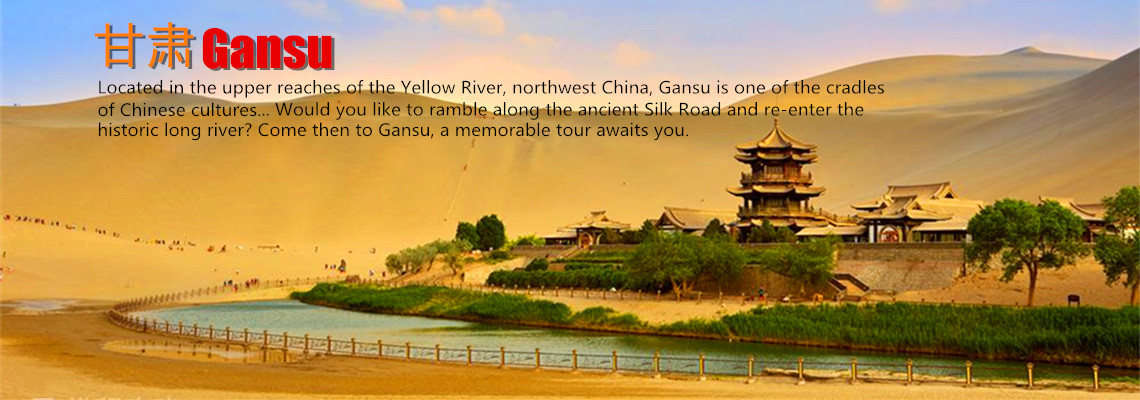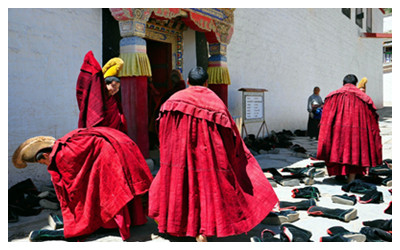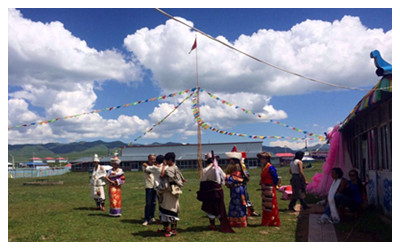
Xiahe City
Xiahe County, located in the south of Gansu Province, boasts wonderful landscape and mysterious religion culture. Unique Tibetan customs and beautiful prairies are shown here very well. Xiahe neighbors Sichuan on the south and Qinghai on the west. Here is the north-east edge of the Qinghai-Tibet Plateau. 78 percent of its population is Tibetans. The center of the county is Labrang Town, which is renowned for the famous Labrang Monastery in its southwest corner.
Xiahe got the name because the Da Xiahe River flows through the county; and also it has the good names of 'Chinese Little Tibet' and 'Eastern Vatican'. With such a great reputation and religious attractions, it attracts many tourists to come to explore.
 In Xiahe County, one of the first things to do is to visit the Labrang Monastery. Located at the foot of Phoenix Mountain, Labrang Monastery is one of the great six monasteries of Gelukpa sect as well as the location of Gansu Provincial Buddhism College. Unlike many other Chinese temples or monasteries, it has no bounding walls. The locals can enter or exit the monastery very conveniently. Its inside seems a little dark. Lighted butter lamps are put here and there. Lamas sit together and recite the Buddhist scriptures. Observing carefully, you can find that even if the locals pass by the monastery, they will bend the body to worship very piously. From this, you can understand how holy religion is in Tibetans' mind.
In Xiahe County, one of the first things to do is to visit the Labrang Monastery. Located at the foot of Phoenix Mountain, Labrang Monastery is one of the great six monasteries of Gelukpa sect as well as the location of Gansu Provincial Buddhism College. Unlike many other Chinese temples or monasteries, it has no bounding walls. The locals can enter or exit the monastery very conveniently. Its inside seems a little dark. Lighted butter lamps are put here and there. Lamas sit together and recite the Buddhist scriptures. Observing carefully, you can find that even if the locals pass by the monastery, they will bend the body to worship very piously. From this, you can understand how holy religion is in Tibetans' mind.
 After visiting the monastery, you can go to the vast Sangke Grassland. It lies about ten kilometers (6.2 miles) west of Xiahe County, surrounded by continuous mountains. The Da Xiahe River flows through here from south to north slowly and makes the prairie abundant with water and grass. Sangke Grassland is an ideal place for summering. Also you can enjoy the happiness of riding a horse or visiting the Tibetan family to try butter tea.
After visiting the monastery, you can go to the vast Sangke Grassland. It lies about ten kilometers (6.2 miles) west of Xiahe County, surrounded by continuous mountains. The Da Xiahe River flows through here from south to north slowly and makes the prairie abundant with water and grass. Sangke Grassland is an ideal place for summering. Also you can enjoy the happiness of riding a horse or visiting the Tibetan family to try butter tea.
Additionally, you can also go to visit the Bajiao City (Eight-angle City), located at the junction of Yangqu River and Yangla River, 35 kilometers (22 miles) north of Labrang Town. Nowadays, because of contrived damage and weathering, the city has suffered a great destroy. But if you have an interest in historical ruins, still you can find much surprise during this visit. Unlike the ordinary cities, it's not rectangular but has eight angles, hence the name. In the ancient times, the city is a transportation hub on the way from Qinghai to Gansu and also a point of battle. It is said that it once was a military fortress in the Han Dynasty (206BC-220).



 Ask Questions ?
Ask Questions ?